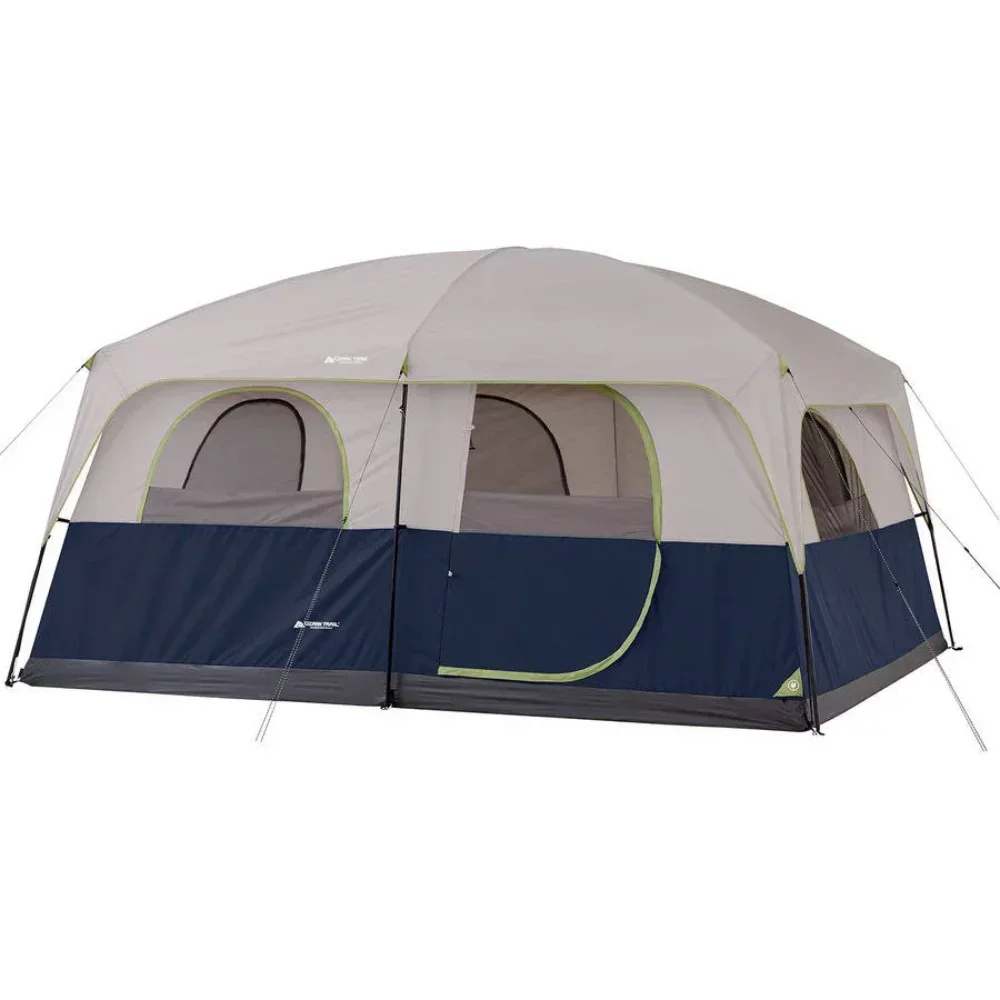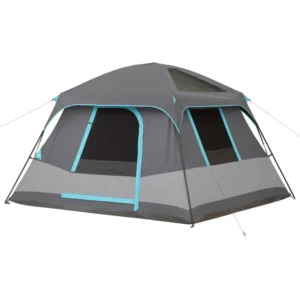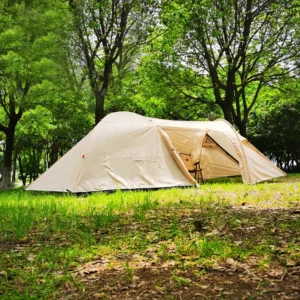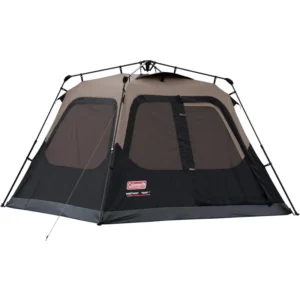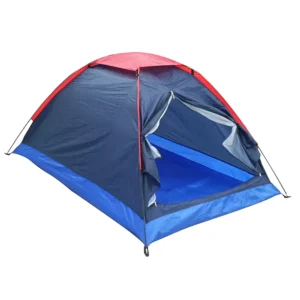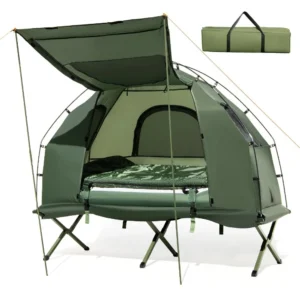Understanding Why Modular Two-Room Tents Are Revolutionizing Outdoor Shelter
The great outdoors is getting a major upgrade with modular two-room tents transforming how we experience camping. But what exactly makes a tent “modular,” and what constitutes a true “two-room” design?
Modular tents feature sections that can connect and disconnect, allowing you to build your ideal shelter configuration. A genuine two-room design provides separate, clearly defined spaces within a single tent structure—not just a flimsy divider, but actual distinct living areas.
This revolution in tent design addresses one of camping’s oldest challenges: privacy. Whether you’re:
- Creating separate sleeping zones for parents and children
- Establishing distinct spaces for different activities (sleeping vs. socializing)
- Providing personal space for mixed groups of friends or extended family
The appeal is clear—these innovative shelters bring home-like comfort to outdoor adventures. As our outdoor experiences evolve, so do our expectations. Today’s campers increasingly seek the convenience and comfort of home while maintaining a connection with nature.
The camping industry has responded to this shift, with tent design evolving dramatically from simple A-frames to sophisticated shelter options for two campers and beyond. Modern modular structures now offer multiple rooms, standing height, and customizable layouts that were unimaginable in traditional camping gear.
This growing demand for comfort without sacrificing the outdoor experience has led to an explosion of innovative modular designs that balance convenience, comfort, and connection to nature.
Key Modular Tent Architecture: How Two-Room Systems Actually Work
Understanding the architecture behind modular two-room tents reveals the ingenious design principles that make these versatile shelters possible. These systems fundamentally differ from traditional tents in how they create and connect separate living spaces.
Three primary modular architectures dominate the market:
Hub-Based Systems: These feature a central area from which separate rooms branch outward, similar to a wheel with spokes. The hub often serves as a communal space with rooms attaching like satellites around it. This design maximizes communal space while still providing privacy in the attached rooms.
Tunnel Designs: Creating a linear layout with rooms arranged sequentially, tunnel designs typically connect through a passage that may also serve as a shared space. This architecture works particularly well on longer, narrower campsites where space might be limited.
Pod Systems: These consist of completely individual units that connect through specially designed interfaces. Pod systems offer the greatest flexibility, as each pod can potentially function as a standalone shelter when needed.
The distinction between true modular designs and fixed two-room tents is important. Fixed two-room tents have a permanent layout that can’t be reconfigured, while modular systems allow you to add, remove, or rearrange components based on your specific needs.
The connection mechanisms between modules are engineering marvels, with systems including:
- Heavy-duty zippers with storm flaps
- Toggle-and-loop systems for quick assembly
- Sleeve connectors that create weather-tight seals
- Proprietary clip systems that ensure stability between sections
The advantages of two-room family tents extend beyond just having separate spaces—they include improved airflow, better temperature regulation, and the ability to accommodate different sleeping schedules without disturbing others.
These architectural approaches represent years of design evolution aimed at creating outdoor living spaces that combine flexibility with protection from the elements.
Top Modular Two-Room Tents: Premium Options for Versatile Camping
When investing in a modular two-room tent system, quality and design details make all the difference in your camping experience. These premium options demonstrate the remarkable innovation in this category, with each offering distinctive features for different camping styles.
Alpine Explorer Modular Hub System
This hub-based design features a central dome with two substantial room pods that attach symmetrically.
- Configuration: 6-person capacity with 10’×10’ (3m×3m) central area and two 8’×8’ (2.4m×2.4m) rooms
- Height: 6‘4” (193cm) center height, 5‘10” (177cm) in rooms
- Materials: 75D ripstop polyester with 3000mm waterproof rating and aluminum pole system
- Weather Resistance: Full-coverage rainfly, bathtub floors, and taped seams throughout
- Ventilation: Mesh panels in each room and adjustable vents in the rainfly
- Setup Time: Approximately 15-20 minutes with two people
- Weight: 32 lbs (14.5 kg) complete system
- Best For: Family camping where a central gathering space is valued
The Alpine Explorer’s standout feature is its robust connection system between modules, creating truly weatherproof seals that perform excellently even in sustained rainfall.
Venture Pod Connect System
This innovative pod-based system allows complete flexibility, with two fully functional standalone tents that can be joined through a specialized connector.
- Configuration: Each pod accommodates 2-3 people, 7’×7’ (2.1m×2.1m) floor space per pod
- Height: 5‘6” (167cm) peak height in each pod
- Materials: 70D nylon body with 40D mesh panels and DAC aluminum poles
- Weather Resistance: Independent rainflies for each pod plus connector cover
- Ventilation: Excellent airflow with multiple mesh panels and ground vents
- Setup Time: 8-10 minutes per pod plus 5 minutes for connector
- Weight: 18 lbs (8.2 kg) for complete system
- Best For: Couples or friends who sometimes camp together and sometimes separately
The Venture Pod’s modular nature makes it exceptionally versatile, functioning as separate shelters when needed or combining for group trips.
Expedition Tunnel Deluxe
This premium tunnel design creates a linear living arrangement with clearly defined spaces for sleeping and living.
- Configuration: 12’×8’ (3.7m×2.4m) living area connected to 10’×8’ (3m×2.4m) sleeping area
- Height: Consistent 6‘2” (188cm) height throughout
- Materials: 150D oxford polyester floor and 68D polyester walls with aluminum frame
- Weather Resistance: 4000mm hydrostatic head rating with reinforced storm anchors
- Ventilation: Adjustable panels in both rooms and strategic high/low venting
- Setup Time: 25-30 minutes for complete setup
- Weight: 42 lbs (19 kg)
- Best For: Extended basecamp stays and family camping in variable weather
The Expedition stands out with its well-engineered space division and superior livability features that make longer trips comfortable regardless of weather.
Browse our complete selection of two-room camping tents to find the perfect configuration for your specific needs.
Essential Features to Evaluate When Choosing Your Two-Room Modular System
When selecting the right modular tent system for your outdoor adventures, certain features dramatically impact your comfort, convenience, and satisfaction. Understanding these key elements helps you make an informed choice aligned with your specific needs.
Room Separation Quality
- Divider Material Construction: Look for substantial, opaque materials rather than thin fabric partitions
- Soundproofing Capabilities: Consider how well voices carry between spaces (crucial for families with young children)
- Independent Access Options: Evaluate whether each room has its own entrance, allowing occupants to come and go without disturbing others
- Visual Privacy Level: Check if light from headlamps shows through dividers at night
The quality of separation directly affects how functional the two-room concept actually is in practice. The best dividers create genuine room-like spaces rather than symbolic divisions.
Construction Quality Factors
- Fabric Durability: Higher denier numbers (70D+) generally indicate more robust fabrics
- Weather Resistance: Look for hydrostatic head ratings of at least 1500mm, with 3000mm+ preferred for serious weather protection
- Frame Strength: Aluminum poles offer the best strength-to-weight ratio; fiberglass is more affordable but heavier and less durable
- Connection Point Engineering: Examine how modules join—this is often the weakest link in weather protection
- Seam Construction: Fully taped seams provide significantly better water resistance
The structural integrity of a modular tent is particularly important because the connection points between sections create potential vulnerability to wind and water.
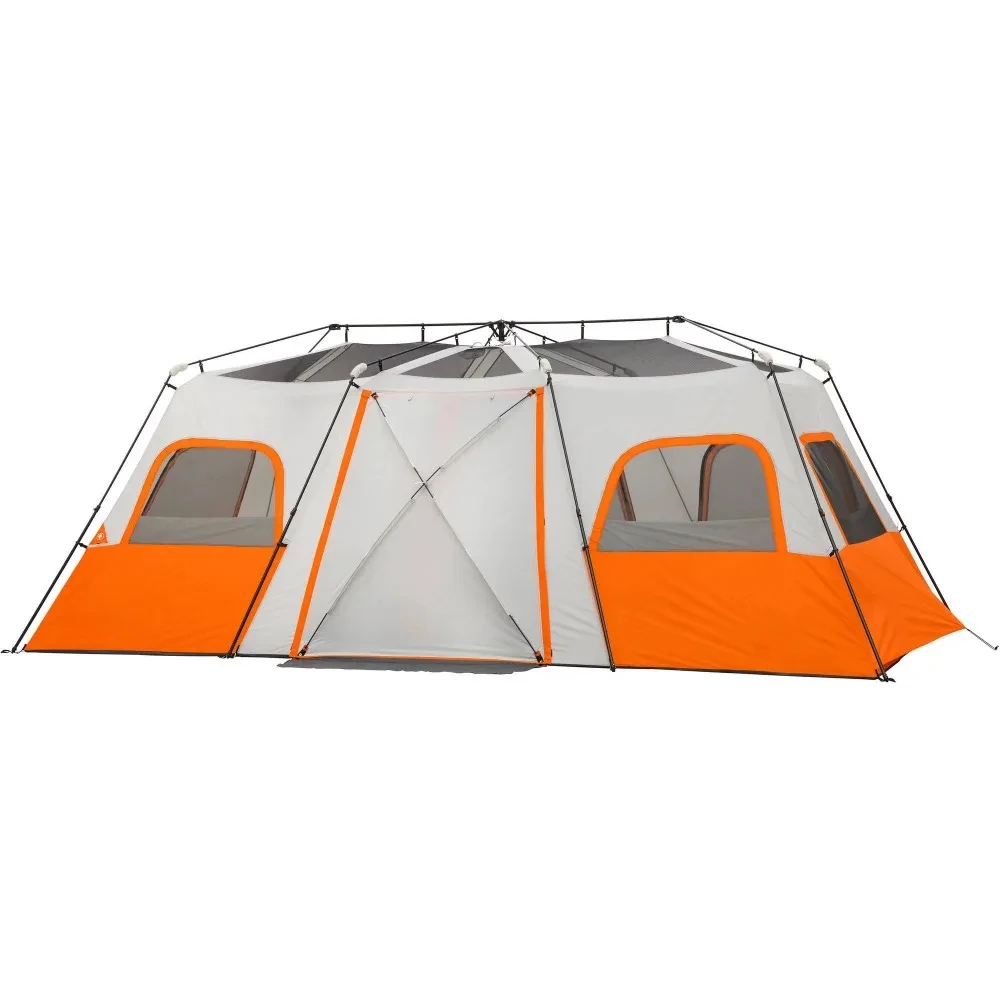
Livability Features
- Standing Height: Check whether the tent allows standing in most areas or just at the center peak
- Window and Door Placement: Strategic positioning enhances airflow and provides views
- Interior Organization: Look for built-in pockets, gear lofts, and hanging points in both rooms
- Floor Space Efficiency: Some designs waste space with awkward angles or unnecessary features
- Electrical Access Ports: Premium models often include sealed ports for running power into the tent
Understanding the various tent layouts with separate areas will help you visualize how your camping routine fits within different configurations. Remember that the most expensive tent isn’t always the best for your specific needs—focus on features that align with your camping style and priorities.
Matching Your Needs: Selecting the Ideal Two-Room Configuration
Finding the perfect two-room tent configuration starts with honestly assessing your camping habits, group dynamics, and typical environment. This targeted approach ensures you invest in a system that truly enhances your outdoor experience.
For Families with Young Children
If you’re camping with small children, consider hub designs with a central living space where the family can gather, plus a separate sleeping area for adults. This allows parents to enjoy evening conversation after children are asleep. Look for configurations where the children’s sleeping area remains visible from the main space for peace of mind.
For Groups of Friends
When camping with friends, privacy becomes more important. Pod systems with completely separate sleeping quarters connected to a communal area offer the ideal balance of togetherness and personal space. Ensure each pod has independent entry/exit points to prevent disturbing others with different schedules.
For Extended Stays or Basecamp Setup
For longer trips, prioritize standing height throughout the tent and generous living space. Tunnel designs often excel here, offering distinct activity zones—one for sleeping and another for dining/socializing. Weather resistance becomes particularly crucial for extended exposure.
Configuration Decision Points
When finalizing your selection, consider these common dilemmas:
Room Size Balance: Equal-sized rooms work well for similar groups, while a larger main room with smaller secondary room suits families or groups with a clear “main area” need.
Access Configuration: Independent entrances for each room provide maximum convenience but add weight and complexity. Connected rooms with a single entrance are simpler but less private.
Divider Flexibility: Removable dividers offer adaptability for different trips, while fixed dividers typically provide better sound and light isolation.
The extensive versatility of two-room tents for group camping makes them exceptionally valuable for varied camping scenarios. Most importantly, choose a configuration that addresses your most frequent camping situation, not the exceptional case that happens rarely.
Remember that weight and packed size increase substantially with modular systems—ensure your vehicle can accommodate the packed tent and that you’re comfortable with the setup requirements before making your final decision.
Setting Up Your Modular Two-Room Tent: Techniques for Success
Proper setup of a modular two-room tent requires more planning and precision than traditional camping shelters, but the results are well worth the extra effort. Following these techniques will help ensure your setup goes smoothly, creating a secure and comfortable base camp.
Site Selection Fundamentals
Start by finding a spot that accommodates your tent’s entire footprint with room to spare for guy lines. Look for:
- Level ground without rocks or roots
- Good drainage to prevent water pooling under any section
- Protection from prevailing winds where possible
- Sufficient distance from water sources (200+ feet/60+ meters)
- Overhead clearance from branches that could damage your tent in wind
For two-room systems, the orientation of separate rooms relative to sunrise/sunset and prevailing winds significantly impacts comfort.
Efficient Assembly Sequence
Most modular systems follow this optimal setup order:
- Lay out all components and identify sections before beginning
- Set up the core/main section first, ensuring it’s properly staked
- Add connected rooms one at a time, securing each before moving to the next
- Apply the rainfly only after all sections are assembled and properly positioned
- Fine-tune guy lines and tensioning only after the complete structure is standing
Connection Point Management
The interfaces between modules require special attention:
- Ensure zippers are completely clear of fabric before zipping to prevent damage
- Apply silicone spray to connection points periodically for smooth operation
- Double-check that weather seals fully cover all connection points
- Verify that tensioning systems between modules are properly adjusted
Many campers find that the techniques used for lightweight tent setup apply to larger structures as well, particularly the principles of proper tensioning and staking.
Common Setup Challenges
- Wind during setup: Use temporary stakes to secure sections as you go
- Misaligned connection points: Never force—disassemble and restart the connection
- Uneven tension: Adjust stake positions to ensure even tension across all sections
- Sagging between modules: Additional support poles may be needed in heavy rain/snow
With practice, most groups can reduce setup time by 30-50% compared to their first attempt. Consider practicing at home before your first trip to identify any challenges before you’re in the field.
Creating Functional Zones: Organizing Your Two-Room Space
The true advantage of a two-room tent comes from thoughtful organization that maximizes functionality in both spaces. Strategic planning transforms your modular tent from merely having divisions to creating purposeful areas that enhance your camping experience.
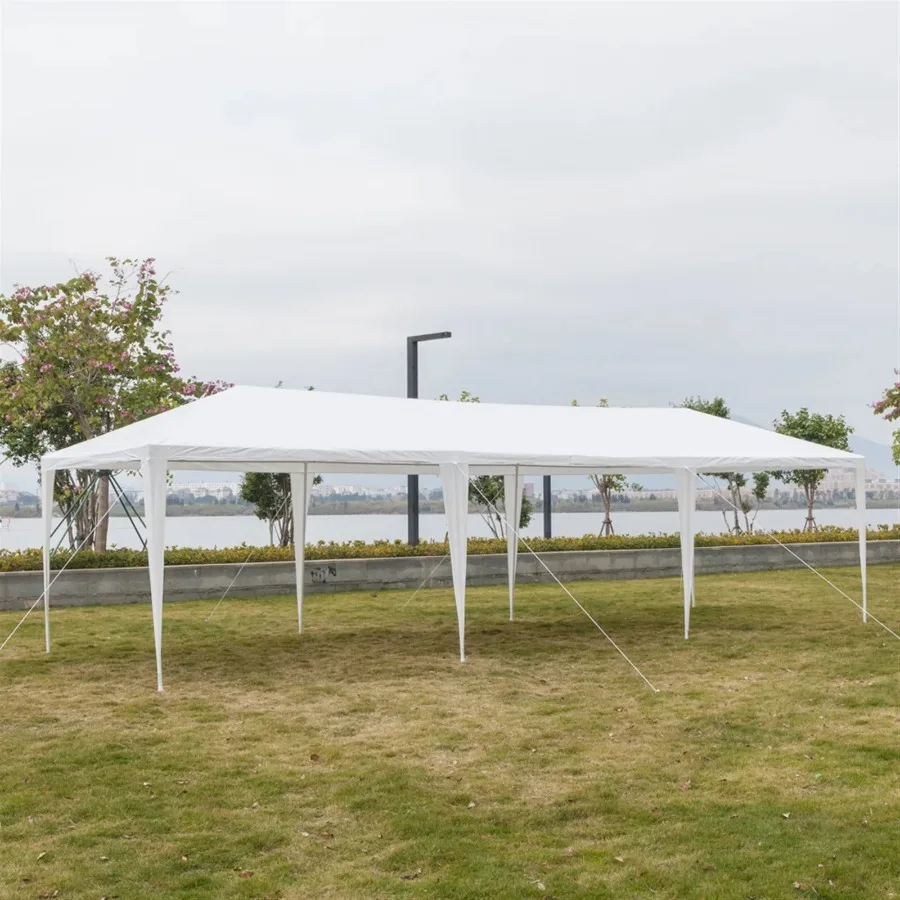
Strategic Room Assignment
Consider these proven configurations based on your group’s needs:
Family Setup: Designate one room for adult sleeping and another for children—or create a sleeping room and a separate living/play area if weather keeps you inside
Extended Camping: Establish a clean sleeping zone separate from a multipurpose space for cooking, dining, and gear storage
Group Camping: Divide sleeping quarters by sleep schedules or snoring considerations rather than simply by gender or relationships
The key is creating intentional spaces that solve specific camping challenges rather than arbitrary divisions.
Enhancing Each Zone
To maximize functionality in each area:
Use packable furniture strategically—camp chairs and tables in living areas, sleeping pads organized efficiently in sleeping zones
Create visual separation with different colored lighting in each space
Establish storage systems appropriate to each zone’s purpose—hanging organizers for clothing in sleeping areas, collapsible shelving for kitchen items in living spaces
Many campers find that adding a camping tent vestibule creates an additional transition zone that helps keep the main living areas clean and organized.
Temperature and Airflow Management
Different zones often have different climate needs:
Sleeping areas typically benefit from cooler temperatures and less airflow at night
Living spaces usually need more ventilation, especially if used for cooking or gathering
Control these differences by selectively opening/closing vents in each section
Use the tent divider to help contain heat or promote airflow as needed
With thoughtful organization, your two-room tent becomes much more than just a shelter—it becomes a functional outdoor living space adapted perfectly to your specific needs.
Beyond Traditional Camping: Alternative Uses for Modular Two-Room Tents
The versatility of modular two-room tent systems extends far beyond conventional weekend camping. These adaptable structures serve numerous creative purposes, offering structured shelter solutions for a variety of scenarios.
Backyard Guest Accommodations
Transform your backyard into comfortable overflow housing for visitors:
* Create a guest bedroom with an adjoining sitting room
* Provide visitors with both privacy and comfortable space
* Add portable furniture, power via extension cords, and amenities for a “glamping” experience
Festival and Event Lodging
Elevate your festival experience with a true home base:
* Use one room for sleeping and another as a secure storage/changing area
* Create a private retreat away from the festival intensity
* Share with friends while maintaining personal space
Remote Work Retreats
Establish a nature-based work-from-anywhere setup:
* Dedicate one room as an office space with proper seating and power
* Use the second room for relaxation and sleep
* Create the ultimate work-life balance with nature just outside
For many of these alternative applications, instant camping tents offer particularly convenient setup, allowing quick transformation of spaces for temporary needs.
Emergency Preparedness
Modular systems provide excellent emergency shelter solutions:
* House multiple family members with some privacy intact
* Create separated areas for different functions (sleeping, eating, storage)
* Establish a more home-like environment during displacement
Yard Projects and Workshops
Set up temporary project spaces:
* Use one room for dusty work and another for clean assembly
* Create a painting booth with a clean storage area
* Establish weather protection for projects that span multiple days
The structural stability and weatherproofing of these systems make them suitable for many applications where traditional camping might never be considered.
Tall / Stand Up Camping Tent, Two Room Camping Tent
$407.93 Select options This product has multiple variants. The options may be chosen on the product pageCamping Tent with Vestibule, Waterproof Camping Tent
Price range: $407.89 through $479.48 Select options This product has multiple variants. The options may be chosen on the product page- $476.52 Select options This product has multiple variants. The options may be chosen on the product page
Easy Setup Camping Tent, Instant Camping Tent
Instant Cabin Tent Double Layer Canvas 1-Minute Setup Spacious Family Camping Shelter with Air Vents$308.10 Select options This product has multiple variants. The options may be chosen on the product pageEasy Setup Camping Tent, Trekking Pole Backpacking Tent
$142.40 Select options This product has multiple variants. The options may be chosen on the product pageEasy Setup Camping Tent, Waterproof Camping Tent
All-in-One Elevated 1-Person Camping Tent Cot with Integrated Sleeping System for Outdoor Adventures$535.16 Select options This product has multiple variants. The options may be chosen on the product page
Frequently Asked Questions About Modular Two-Room Tents
How waterproof are the connection points between modules?
Connection points are engineered with overlapping weather flaps, specialized sealing systems, and reinforced seams. Quality modular tents feature connection points that are as waterproof as the main tent body. Look for models with fully taped seams at interfaces and protected zippers. During heavy, sustained rainfall, connection points may require occasional inspection to ensure water isn’t pooling at junctions.
Can I use individual sections of a modular tent independently?
This varies by design. Pod-based systems typically allow independent use of each section as standalone shelters. Hub-based and tunnel designs often require at least the central component to function properly. Check the manufacturer specifications for each system, as some are designed specifically with independent use in mind, while others function only as complete units.
How does the lifespan compare to traditional tents?
With proper care, modular tents typically last 7-10 years of regular use—comparable to high-quality traditional tents. The connection points may show wear sooner than other components due to mechanical stress during setup. Many manufacturers offer replacement parts specifically for connection mechanisms, extending the overall lifespan of the system.
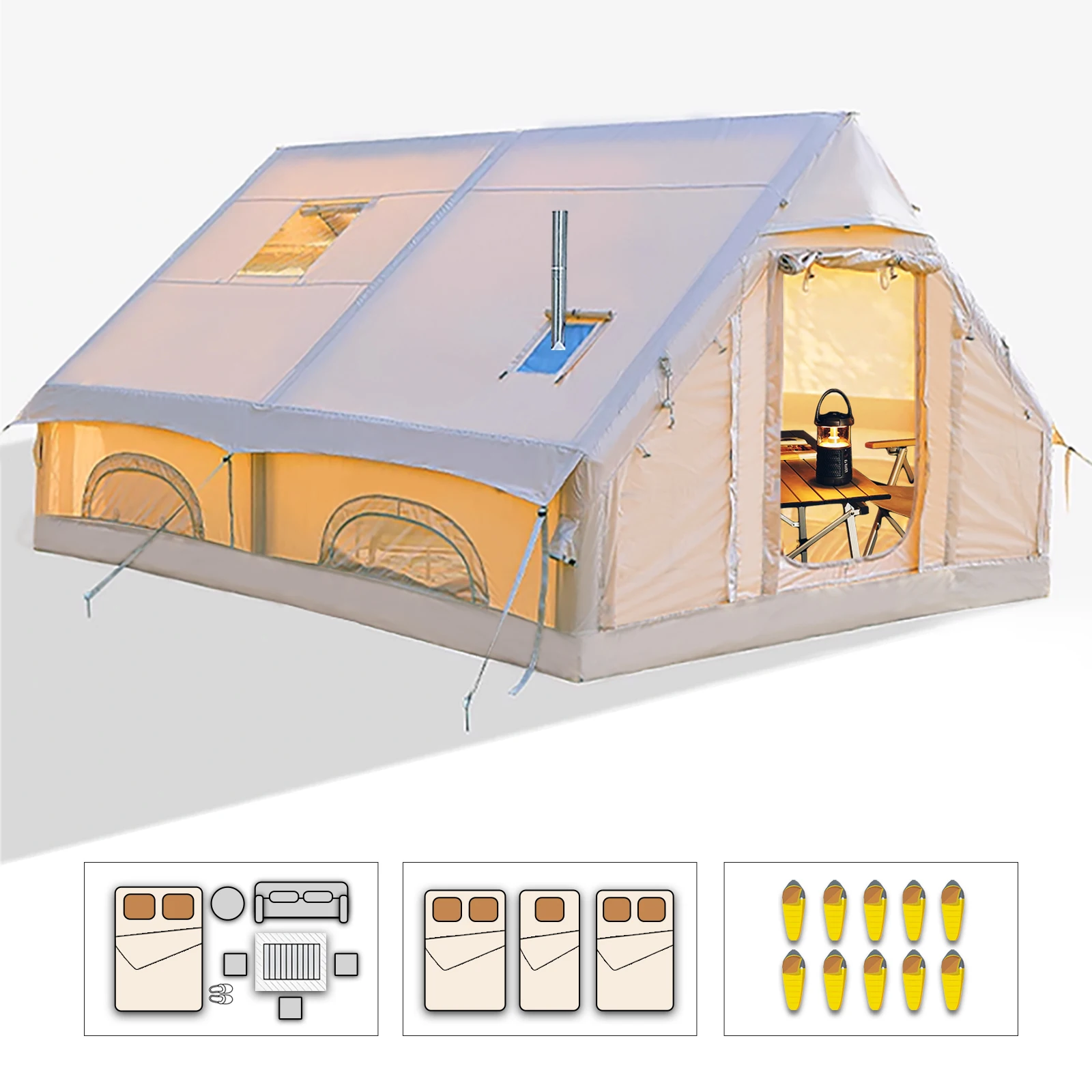
Are heating and cooling different in two-room structures?
Two-room structures actually offer advantages for temperature management. You can:
* Create different temperature zones by selectively opening vents
* Use the divider to contain heat in one section during colder weather
* Create airflow patterns that ventilate one area while keeping another more protected
Understanding tent sizing requirements helps manage temperature expectations, as larger volumes of air are harder to heat but stay cooler in hot weather.
Can I mix and match components from different brands?
Generally, no. Each manufacturer uses proprietary connection systems designed specifically for their products. Some brands offer limited cross-compatibility within their own product lines. Universal adapters are rare and typically don’t provide the same weather protection as native connections.
What’s the best way to store modular tent systems?
Store sections individually rather than connected, in loose bags rather than tightly compressed. Ensure all components are completely dry before storage to prevent mildew, paying special attention to connection points where moisture can hide. Store in a cool, dry place away from direct sunlight, and consider using silica gel packets in storage bags to absorb residual moisture.
Maintaining Your Investment: Care Tips for Modular Tent Longevity
Modular two-room tents represent a significant investment in your outdoor lifestyle. With proper care, these versatile shelters can provide many years of reliable service across countless adventures. The key to longevity lies in consistent maintenance focused on the unique aspects of modular design.
Connection Point Care
- Inspect seams and zippers at connection points after each use
- Clean sand and dirt from zippers using a soft brush
- Apply zipper lubricant (not WD-40) to connection zippers twice annually
- Check for stress points where modules join and reinforce if needed
Cleaning Best Practices
- Spot clean with mild soap and warm water rather than harsh detergents
- For stubborn stains, use specialized tent cleaning products
- Never machine wash any tent components
- Rinse thoroughly to remove all cleaning solutions
Proper Drying Protocol
- Never pack away any component while damp
- Set up partially or fully to ensure complete drying
- Pay special attention to corners, pockets, and connection mechanisms
- Allow extra drying time for double-layer areas and reinforced sections
For those seeking convenience without sacrificing quality, easy-setup camping tents often incorporate modular features with simplified care requirements.
UV Protection Strategy
- Minimize prolonged direct sun exposure when possible
- Consider applying UV protectant spray annually
- Set up in shaded areas when available
- Remember that UV damage is cumulative and often irreversible
Seasonal Maintenance Checklist
- Inspect and clean all components before first use of the season
- Check and replace damaged stakes and guy lines
- Verify that all connection mechanisms work smoothly
- Re-apply waterproofing to seams if showing signs of wear
- Test setup before heading out to ensure all parts function properly
With these care practices, your modular tent system remains not just functional but in optimal condition, ready for whatever adventure you plan next.
Is a Two-Room Modular Tent Right for Your Outdoor Adventures?
After exploring the world of modular two-room tents, it’s time to determine if this specialized shelter solution aligns with your outdoor lifestyle. These innovative structures offer distinctive benefits, but they’re not ideal for every camping scenario.
The Compelling Benefits
- Enhanced Privacy and Space Division: Create genuinely separate areas that accommodate different activities and sleep schedules
- Adaptable Configurations: Adjust your living space to match group size, campsite constraints, or specific needs
- Flexible Use Cases: From family camping to remote work to backyard guest space, these systems serve multiple purposes
- Improved Camping Comfort: Experience a more home-like environment with designated functional zones
Realistic Considerations
- Price Premium: Expect to pay 30-50% more than comparable single-room tents of similar quality
- Setup Complexity: Additional components mean more time and coordination during setup
- Increased Weight and Bulk: Components that create multiple rooms add significant weight and packed size
- Steeper Learning Curve: Mastering efficient setup and optimal configuration takes practice
Who Benefits Most?
Two-room modular tents shine brightest for:
- Families seeking balance between togetherness and privacy
- Groups with mixed schedules or activity preferences
- Those who camp for extended periods in a single location
- Campers who value organization and dedicated space for different functions
Before investing, ask yourself:
* How often will you actually need separate rooms?
* Is the added comfort worth the increased complexity and cost?
* Do you have adequate transportation space for larger packed tent?
* Are you willing to practice setup to become proficient?
At Explore Elements, we believe that the right equipment enhances every outdoor adventure. For many campers, the investment in a quality two-room modular tent transforms the camping experience from simply enduring the outdoors to truly living in nature—comfortably, organized, and with the perfect balance of togetherness and privacy.

